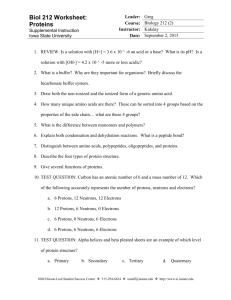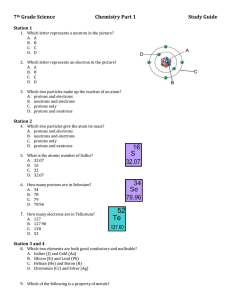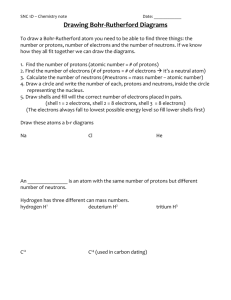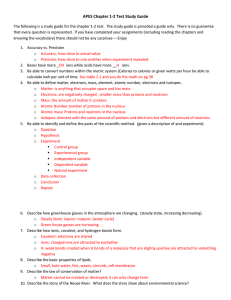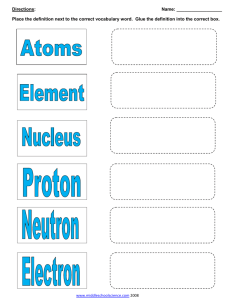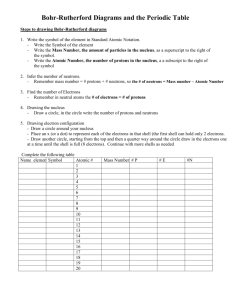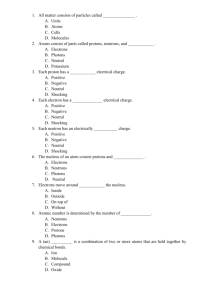Particles, atoms and elements
advertisement
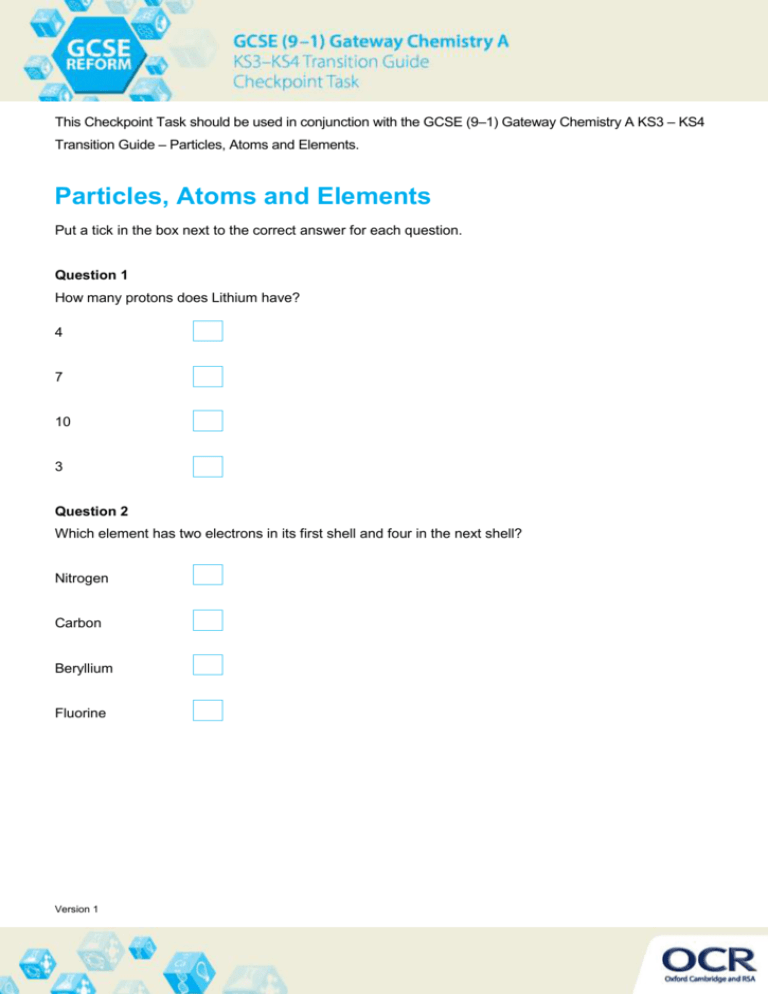
This Checkpoint Task should be used in conjunction with the GCSE (9–1) Gateway Chemistry A KS3 – KS4 Transition Guide – Particles, Atoms and Elements. Particles, Atoms and Elements Put a tick in the box next to the correct answer for each question. Question 1 How many protons does Lithium have? 4 7 10 3 Question 2 Which element has two electrons in its first shell and four in the next shell? Nitrogen Carbon Beryllium Fluorine Version 1 Question 3 Which is group 1 on the periodic table? Alkali metals Halogens Nobel Gases Transition metals Question 4 How many neutrons does Fluorine have? 28 19 10 9 Question 5 Which is not found in the middle of an atom? Protons Nucleus Neutrons Electrons Version 1 Question 6 Which is not a Noble Gas? Argon Neon Bromine Helium Question 7 Which is in the same group as Magnesium? Calcium Iron Carbon Potassium Question 8 Which has a positive charge? Neutron Electron Protons Nucleus Version 1 Question 9 Roughly how many elements are on the periodic table? 100 200 300 900 Question 10 How many electrons can the first shell hold? 2 4 8 10 Question 11 Which element has a total of 32 protons and neutrons? Aluminium Sulphur Sodium Germanium Version 1 Question 12 Which element is a Noble gas found in balloons? Neon Oxygen Argon Helium Question 13 Which of the following is not a compound? Carbon Dioxide Sodium Chloride Nitrogen Water Question 14 Which is not a transition metal? Zn Hg Sn Rh Version 1 Question 15 Which atom is the smallest non-metal? Lithium Helium Boron Hydrogen Version 1 Quiz follow on 1. Label the diagram with the following words: Proton Neutron Nucleus Electron 2. Complete the sentences: a. The element in the picture is b. The element is in group c. Is this the same group as Be or Al or C? Version 1 on the periodic table. d. What is the atomic mass of this element? e. Complete the diagram by adding more electrons in the correct place. f. Version 1 Explain whether you think the element is a metal or a non-metal.


